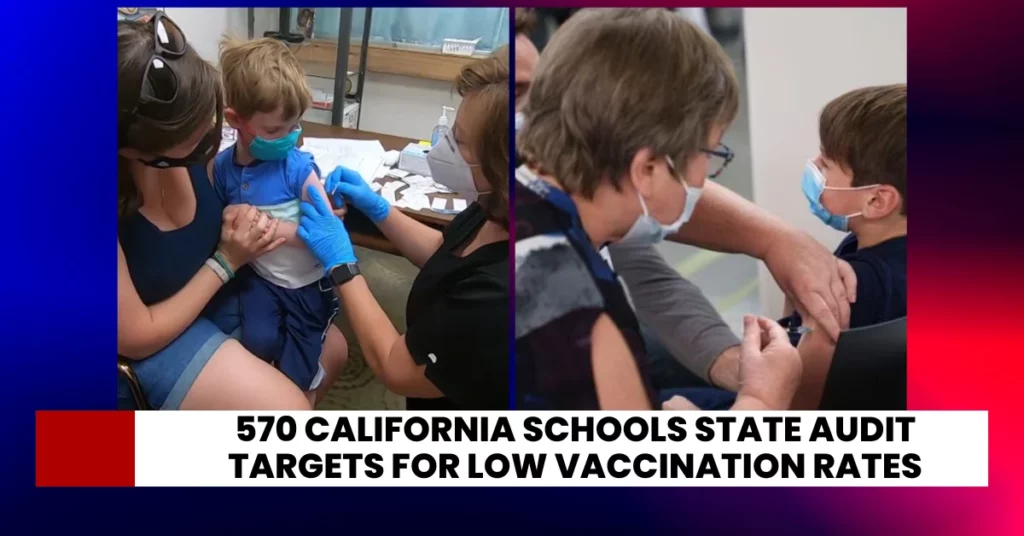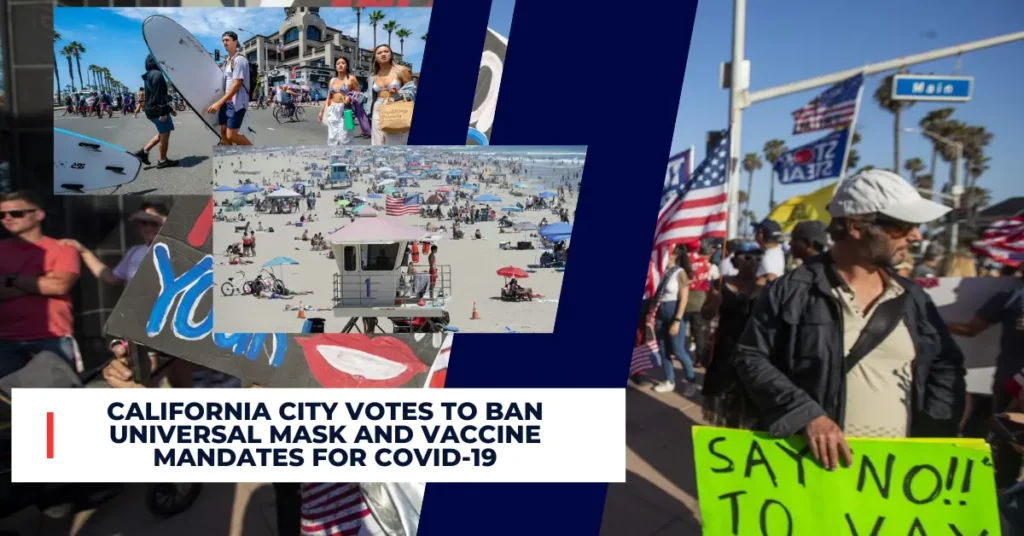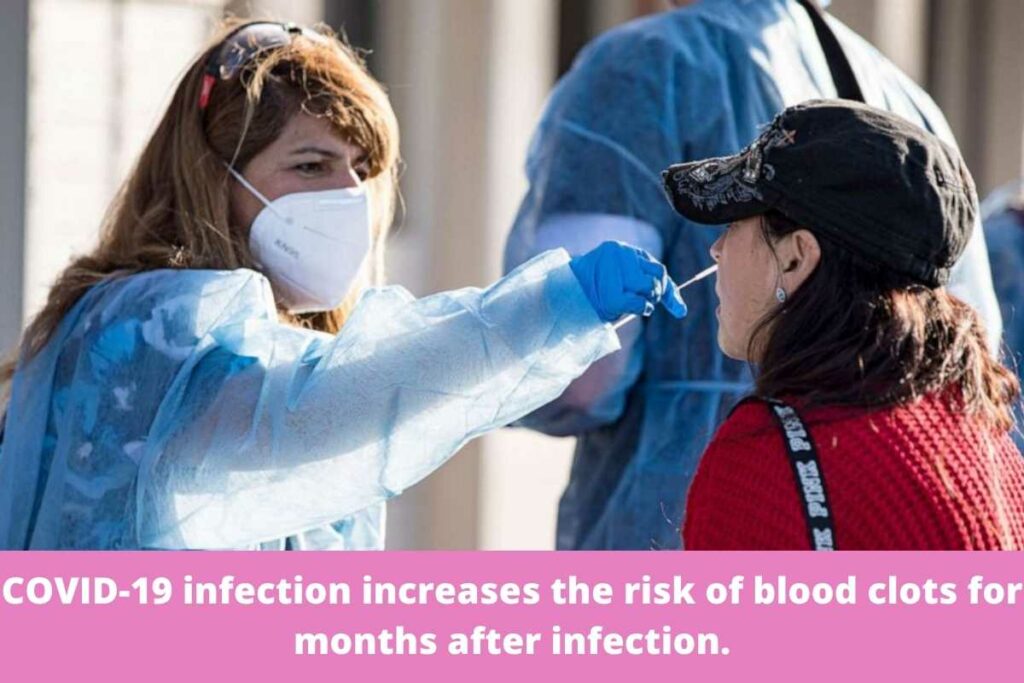According to the CDC, half of California residents live in high-risk counties. However, the agency relied on out-of-date COVID infection and patient counts. Recent data reveals that only 19 counties fall into the CDC’s riskiest category, necessitating universal masking.
Federal health officials stated to local officials that nearly half of Californians who reside in “high-risk” areas for COVID-19 were relying on outdated data. Only a few counties remain in that category.
At issue is whether counties classified as high risk should maintain indoor masking requirements under recent CDC recommendations or follow the state’s lead and eliminate practically all mask restrictions.
According to Kamlesh Kaur, a spokeswoman for the Stanislaus County Department of Public Health, the county was taken aback by the CDC’s high-risk designation.
Stanislaus County’s most recent COVID-19 case rate is almost 13 times smaller than what the CDC published on Friday, she said.
The CDC’s estimations look to be more than a month out of date. “I’m not sure when the Centers for Disease Control and Prevention (CDC) acquired their data. They indicate somewhat more than 200 incidences per 100,000 inhabitants. At the moment, we have 18.2 cases per 100,000 residents,”‘She stated.
The CDC’s new guideline on protective measures for counties is based on three criteria: the percentage of hospital beds occupied by Corna Virus patients, the seven-day case rate per 100,000 population, and the seven-day hospital admission rate.
On Friday, the federal agency produced a map indicating that more than half of California’s 58 counties and 49% of its population were classified as high-risk under those three criteria.
However, a CalMatters review of state statistics reveals that just 19 counties, home to 5.8 million people or 14% of the population, should be classified as high risk under the CDC’s parameters and encouraged to maintain indoor mask laws. (The California Department of Public Health only records total hospital admissions; it does not track new admissions.)
According to Kaur, Stanislaus County is currently classified as a mid-tier county, which means the CDC considers indoors masking for vaccinated and unvaccinated people necessary.
According to Kaur, the county respects state norms and will not issue stricter instructions, even if public health authorities strongly advocate masks.
Kings, Fresno, Imperial, and other less-populated Central Valley and far northern counties are the 19 high-risk counties.
The CDC did not reply to inquiries concerning the data’s origins. The agency intends to update the tool every week beginning Thursday.
Los Angeles County, which has established some of the state’s strongest COVID-19 mitigation measures, stated that it would align its policy with the CDC’s new county advice.
The CDC classified Los Angeles County as having the highest risk, although county data indicate otherwise.
COVID-19 patients represent nearly 6% of all hospital beds in the state’s most populous district on a weekly average of ten new cases and 7.4 hospital admissions per 100,000 residents.
These figures place the county significantly below the CDC’s definition of a low-risk jurisdiction.
Barbara Ferrer said the county is expected to slip into a less rigorous tier this week.
“You can see that even last week, we were on the verge of lowering our thresholds, and we are fairly certain that when the Centers for Disease Control and Prevention updates their dashboard, we will move to low risk,” Ferrer said the Los Angeles County Board of Supervisors on Tuesday.
“By the time we reach low or medium risk on Friday, nearly all of these (masking) criteria will have been elevated to strong recommendations.”
Los Angeles Agency requires both vaccinated and unvaccinated individuals to wear masks indoors. Still, the county hopes to ease the requirements as soon as Friday, once the county is removed from the CDC’s high-risk category.
California’s mandatory indoor mask requirement for vaccinated individuals expires on February 15. The state then eliminated the need for unvaccinated individuals to wear masks on Tuesday and at schools beginning March 12.
The CDC’s use of out-of-date data and significant uncertainty over various state and federal rules cast doubt on the CDC’s masking recommendations’ effectiveness and utility.
In California, except for Los Angeles, most counties appear to be following the state’s masking requirements rather than the new federal guidelines.
Dr. Norma Perez, a pediatrician at AltaMed in Los Angeles, said the disparate recommendations at the national, state, and local levels are perplexing to the public.
“We work in Los Angeles and Orange counties, and within those two counties, we occasionally get recommendations for varying degrees of masking,” she explained.
While physicians work to stay current with new regulations, their message is that masking is strongly encouraged, particularly for those at increased risk of severe sickness, Perez said.
Scientists and community groups have criticized state and federal mask regulations’ loosening for failing to account for immunization rates and inequities among hard-hit populations.
Throughout most of the pandemic, California’s statewide restrictions — and those enacted by some counties — have been more cautious and frequently more stringent than those issued by federal health officials.
California was the first state to order inhabitants to shelter in place; its guidance for school reopenings was stricter than the CDCs. More recently, during the omicron outbreak, state guidelines for resuming work required a negative test, whereas the CDC only required five days of isolation.
However, in recent months, disguising orders have been increasingly contentious in communities and legislators.
Mask Rules
Scientists and the community have criticized the loosening of mask requirements for failing to account for differences among hard-hit communities.
Earlier this month, nearly 100 Sonoma County health workers and community advocates signed a petition requesting the county health department to defer joining the state in halting vaccination masking.
State guidelines exempted Sonoma and 11 other Bay Area counties, including Santa Clara, from masking requirements.
Dr. Jennifer Fish, a doctor who signed the letter, stated that COVID hospitalizations and deaths disproportionately affect the Latino community.
While Latinos account for fewer than 24% of the inhabitants in Sonoma County, they account for 50% of cases, 40% of hospitalizations, and 31% of fatalities.
“It’s critical to recognize that the impact extends beyond those numbers. These are community individuals who face a greater chance of job loss, homelessness, and food poverty, “As Fish stated.
Despite attempts to enhance vaccination and testing, African Americans and Pacific Islanders continue to die at disproportionately high rates throughout the state.
Health care providers and advocates in Sonoma County hope the county will reconsider eliminating school mask restrictions. A third of student cases have happened among the most vulnerable pupils.
“Even if the risk is lower than it was during the surge’s peak, it remains higher for vulnerable communities. We want a policy that puts our most vulnerable pupils first, “As Fish stated.
Santa Clara County is among the few counties set its unmasking and vaccination standards. On Tuesday, Dr. Sara Cody, the county’s health officer, said that those benchmarks had been met.
Cody stated that the county could waive its masking requirements due to its low and consistent hospitalization rate. For seven days, the average daily number of new cases has been less than 550. Almost 85% of the county’s population is immunized.
While the mask mandate is no longer in effect, Cody said residents are still encouraged to wear masks indoors, particularly those with a higher risk of disease.
“Prevention of infection remains an admirable goal,” Cody stated. “And we know that masks prevent infection; they remain an essential layer of protection against an airborne viral respiratory illness.”
During a release, Sen. Richard Pan, a Democrat from Sacramento and the chair of the Senate health committee, said that while case rates have decreased, they “remain high and far too many Californians remain exposed.” He urged locals to continue masking indoors, especially schools, as pediatricians.
However, Sen. Melissa Melendez, a Republican from Lake Elsinore and vice-chair of the same health committee, has spoken out against school-based mask restrictions that are being extended.
“What has changed is not the science; it is the political science,” Melendez wrote in a recent later statement the state’s mask revision. “It is apparent that the rising political pressure exerted by parents and Californians is influencing these decisions.”




